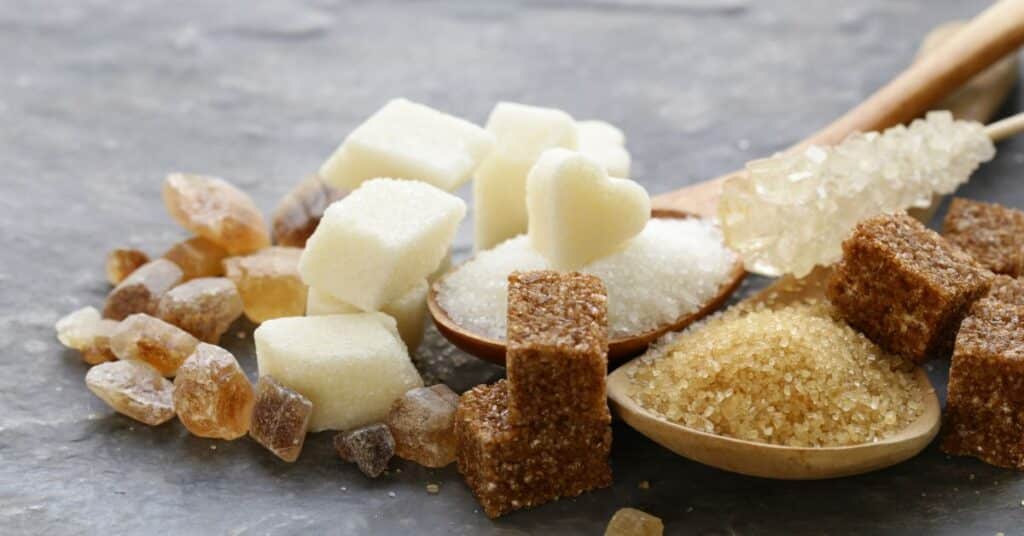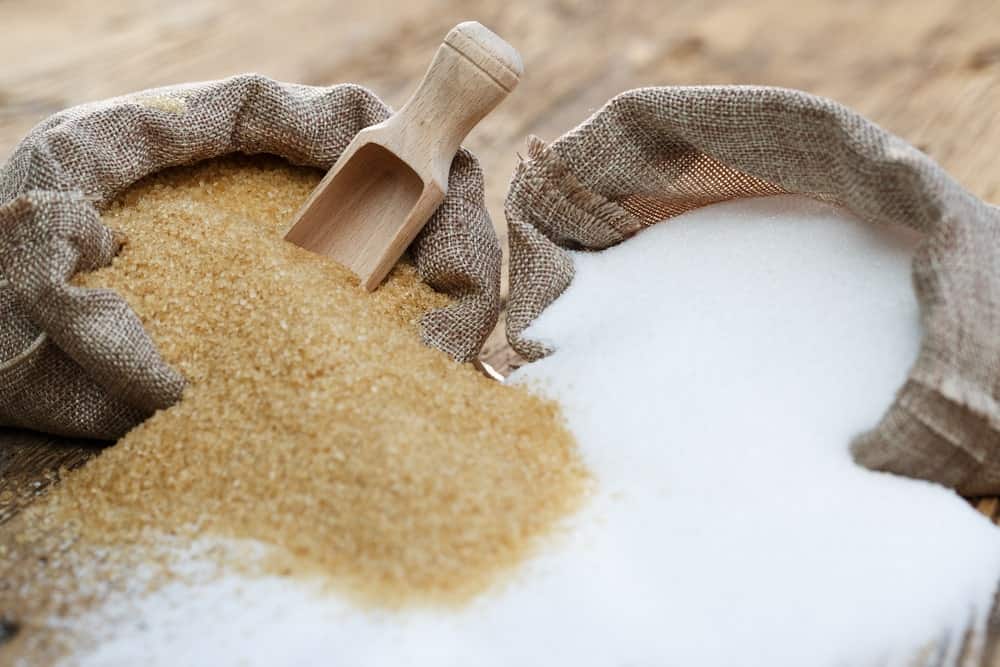
When baking cookies, the type of sugar you use can significantly impact the flavor, color, and texture of your final product. Many recipes call for white sugar, but substituting brown sugar can offer a richer taste due to its molasses content.
Whether you’re a fan of chewy and moist or crisp and delicate textures, trying different sugars in your cookie recipes can be a delightful experiment. Your preferences will guide whether brown sugar or white sugar makes its way into your mixing bowl. So grab your apron, preheat your oven, and let’s see how these sweet granules can transform your cookie experience!
What Makes Brown Sugar Different from White Sugar?
Brown sugar is white sugar with molasses added back into it. This addition not only gives brown sugar a moist, clumpy texture but also a distinct molasses flavor. In terms of composition, white sugar, or granulated sugar, is essentially sucrose that has been processed to strip away molasses and refine it to pure white crystals.
- White Sugar: 100% sucrose, no molasses
- Brown Sugar: Sucrose + 3.5% to 6.5% molasses (for light and dark brown sugar, respectively)
Nutrition and Caloric Values
Despite the common perception that brown sugar is significantly healthier, both brown and white sugar have similar caloric content due to their main component: sucrose.
| Nutrient | Brown Sugar (per 100g) | White Sugar (per 100g) |
|---|---|---|
| Calories | 377 kcal | 387 kcal |
| Iron | 0.71 mg | 0.05 mg |
| Calcium | 85 mg | 1 mg |
| Nutrients | Trace minerals | Trace minerals |
Brown sugar contains trace amounts of minerals like iron and calcium, which come from molasses. However, these amounts are too small to have a significant impact on your nutrition. When you’re baking cookies, choosing between brown and white sugar should, therefore, be based on the flavor and texture you desire rather than the nutritional content.
Baking Impact of Brown Sugar Versus White Sugar
Choosing between brown sugar and white sugar for your cookie recipes affects the texture, flavor, and baking behavior.
Texture and Consistency in Cookies
Using brown sugar in your cookie dough often results in a softer and chewier texture due to the molasses content, which is hygroscopic and, therefore, attracts more moisture. If you prefer a crisp cookie, granulated white sugar is your go-to as it allows the dough to spread more, resulting in thinner, crisper edges.
- Soft and Chewy: Brown sugar (especially dark brown) introduces more moisture which contributes to a chewier texture.
- Crisp: White sugar tends to make cookies crispier, especially if creaming it with butter to create air pockets for a lighter texture.
Flavor Profile and Sweetness
Your choice between light or dark brown sugar and white sugar also has a distinct impact on the cookie’s flavor. White sugar offers a clean, sweet taste, while brown sugar provides a rich, caramel-like flavor due to the molasses. Dark brown sugar has a higher molasses content than light brown sugar, so it imparts a stronger, more complex taste.
- Sweetness: All sugars sweeten, but the flavor nuances differ.
- Molasses Content: Brown sugar’s molasses enhances flavor complexity.
How Sugars Affect the Baking Process

The chemical properties of sugars influence the baking process in several ways. Brown sugar, being more acidic, can react with baking soda to create carbon dioxide, leading to a greater rise in your cookies. On the other hand, white sugar, when creamed with butter, helps incorporate air contributing to a lighter texture through mechanical leavening. The interaction with dry ingredients like flour also affects gluten development, which impacts texture.
- Leavening Reaction: Brown sugar’s acidity can react with leavening agents for rise.
- Creaminess and Air: Creaming white sugar with butter creates air pockets for a light texture.
- Moisture Content: Brown sugar adds moisture, influencing the chewiness and spread of the cookie.
Remember, if you’re making substitutions, you’ll need to adjust your recipe to account for differences in moisture and texture. Your oven’s temperature and the baking time might also vary slightly depending on the type of sugar you use.
Frequently Asked Questions

How do the flavors and textures of cookies vary with brown sugar compared to white sugar?
The molasses in brown sugar impart a rich, caramel-like flavor and chewier texture, whereas white sugar gives a light, delicate taste with a crunchy edge if baked longer.
Can brown sugar be used as a complete substitute for white sugar in baking cookies?
Yes, brown sugar can substitute for white sugar in most cookie recipes. Expect cookies with a deeper color and a more pronounced butterscotch or caramel flavor profile.
Which type of sugar is traditionally preferred for achieving a chewy cookie texture, and why?
For chewy cookies, brown sugar is preferred due to its higher moisture content from the molasses, which helps retain softness during and after baking.
Are there specific types of cookies that are enhanced by using brown sugar rather than white sugar?
Cookies that benefit from moist, dense textures, like chocolate chip or oatmeal cookies, are often enhanced by the moisture and flavor profile of brown sugar.
In terms of baking cookies, how does the moisture content differ when using brown sugar instead of white sugar?
Brown sugar contains more moisture because of the molasses, leading to a more tender and chewy cookie, while cookies made with white sugar tend to be more crisp and may spread more during baking.
